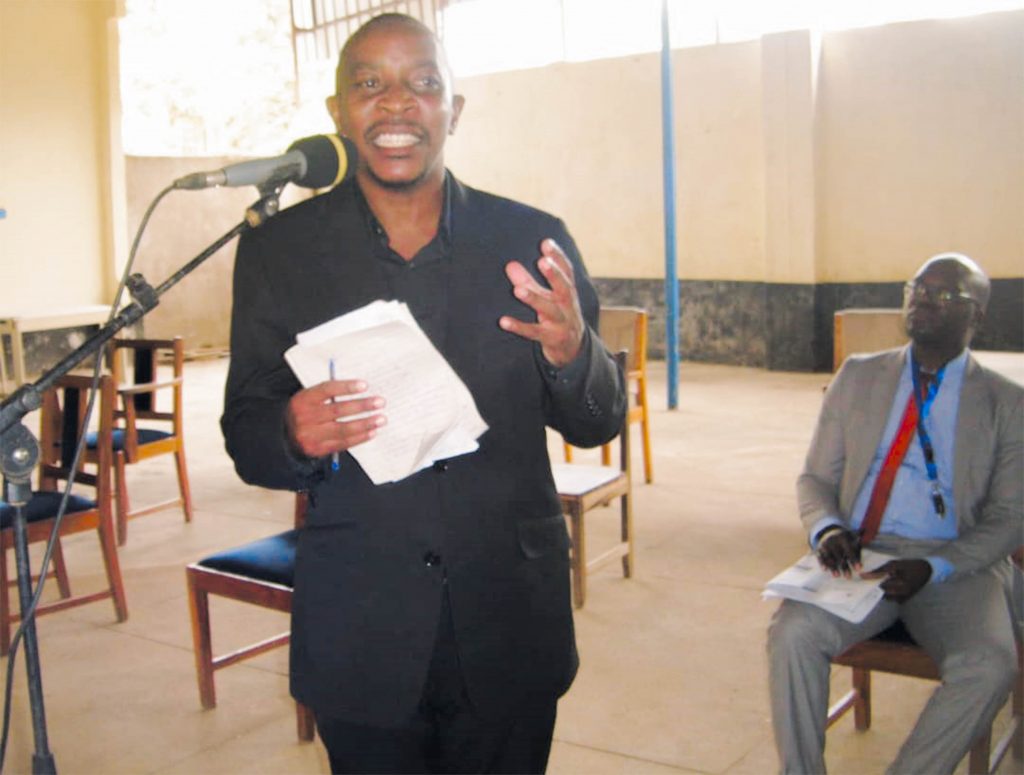
Mining
Malawi lags behind on green minerals strategic approach – CSOs
February 24, 2024 / Wahard Betha

Civil Society Organization (CSO) working in the extractives sector under the umbrella of the Natural Resources Justice Network (NJRN) have expressed concern over Malawi’s delays in embracing strategies specifically focusing on green minerals that are found in the country.
The country has development strategies that focus on the entire mineral sector unlike other African countries that have developed specific strategies bearing themes of the green minerals per African Green Minerals Strategy (AGMS).
AGMS is a continental green mineral strategy with the vision of ‘An Africa that harnesses green mineral value-chains for industrialization and electrification, creating green technologies and sustainable development to enhance the quality of life of its people.’
The Strategy focuses on four themes that support the vision of the strategy namely: advancing mineral development; developing people and technological capability; building Key value-chains; and mineral stewardship.
Coordinator for NRJN Kennedy Rashid said even though the country is doing well in some areas within the sector, there is a lot more that the Ministry can do in order to ensure that Malawi really achieves wealth creation.
Rashid said one of the areas that the country needs to work on is that of beneficiation and value addition of the raw green minerals that are found in Malawi.
He said: “In rating the Ministry of Mining, it would be great to acknowledge the efforts that have been shown this far in capacity building.”
“We have managed to conduct geological mapping and other geological studies as evidenced with the Geological Mapping and Mineral Assessment Project (GEMMAP).”
“But I am not sure that we have done enough on technological enhancement as we still rely on foreign institutions to assist in scientific analysis of the green minerals.”
“Right now, we do not have the required laboratories with international certified standards for industrial testing of samples of these energy minerals.”
Rashid said such a situation manifests that the country seems not to have strategies on how it can beneficiate the green minerals.
Malawi is reach in green minerals including; niobium, are earth elements both heavy and light elements, titanium (rutile), nickel, graphite and some pockets of lithium.
But responding in an emailed questionnaire, Public Relations Officer for the Ministry of Mining, Tiwonge Kampondeni said the Ministry has strategies in place to ensure that the country’s green minerals are protected and contribute to socio economic development.
Kampondeni said the government through the Ministry is promoting value addition within Malawi to ensure that mining activities are benefiting both the government and the country’s citizens.
She said: “Instead of sending samples outside the country and letting the processing of minerals be done outside the country, we want all this done in Malawi.”
“As a government, we need certified laboratories and refinery plants which may take a little longer as it would require huge sums of money but it is where we are going as a Ministry.”
“We are also making sure that local content framework should be emphasised where locals should participate in all levels of the value chain.”
“We are making sure that licences are issued within a short period of time and also taking a collaborative approach in mining where all stakeholders take part in coming up with a sustainable mining sector.”
Kampondeni said that the Ministry is also ensuring that companies are transparent enough in developing and compiling their exploration data.
As one way of ensuring win-win deals between government and companies, Kampondeni said the Ministry is making sure that Mining Development Agreements (MDA) for all minerals including green minerals are properly negotiated for the benefit of Malawians.
Kampondeni also said to underline the Ministry’s commitment in developing green minerals, the Ministry of Mining attended a conference on green minerals in Saud Arabia last month.
The AGMS strategy aims at increasing geological knowledge, conducting feasibility studies to attract investment, establishing infrastructure for an enabling environment and aligning mineral resource management with the African Mining Vision.
The strategy also focuses on developing people and technological capability by identifying skills needed to capitalise on opportunities, and building the institutions to generate them.
AGMS establishment will also build Key Value-Chains to achieve resource-based industrialisation and access wider regional and continental markets through the African Continental Free Trade Area (AfCFTA) following the establishment of battery and electric vehicles value chains, starting with two and three wheeled vehicles and commuter busses.
According to the strategy, mineral stewardship will responsibly guide the environmental, social and governance aspects of green minerals together with material reuse and recycling.
The African green minerals strategy also focusses on minerals critical to energy transition, high tech and defense industries that have few producers and/or supply risks.
It focuses on access to critical minerals becoming an energy security issue, and also Critical Minerals critical to consumer countries seeking to secure their supply chains so often couched in geopolitical/ strategic term.
African green minerals are gaining an upsurge in demand in energy technologies including wind, solar, electric vehicles, switching fuels, grid expansion, hydrogen, low carbon energy sources and many others.































